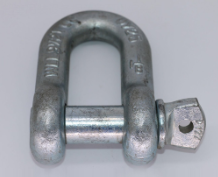




As a connecting component for lifting and hoisting operations, the two most commonly discussed concepts for a shackle are strength and hardness. To this day, many people still do not understand the concepts of shackle strength and hardness, and even believe that they are the same concept. High strength naturally means strong hardness, and hardness means strength. However, this is not the case. Below, Chenghua will give you a hardcore science popularization.

Strength: Strength refers to the ability of a material to resist damage from external forces. In materials science, strength usually refers to the tensile strength of a material, which is the ability of the material to resist damage when subjected to tensile force. The higher the strength, the more difficult the material is to be destroyed. Hardness: Hardness is the ability of a material to resist surface deformation or puncture. Hardness is usually used to measure the wear resistance and scratch resistance of materials. The commonly used methods for hardness testing include Rockwell hardness, Vickers hardness, and Brinell hardness.
From the above description, we can clearly see that although strength and hardness are related to the mechanical properties of materials, their testing methods and specific meanings are different. Strength mainly focuses on the material's ability to resist damage under stress, while hardness focuses on the material's surface resistance to deformation and puncture. Therefore, our usual descriptions of the strength and hardness of shackles are actually two different things. If you want to learn more about the hardcore knowledge of shackles, you can always follow us.